How one can repair “Crawled – Lately Now not Listed” – 5 easy steps!
Google doesn’t give a transparent solution as to why a given web page used to be crawled however now not listed, however there are a couple of imaginable the reason why the standing may seem. Discover ways to repair this factor with the next steps.
STEP 1: Supply top of the range content material
As a web site proprietor, you will have to be sure that your web page supplies top of the range content material. Test if it’s prone to fulfill your customers’ intent and upload nice high quality content material if wanted. Google Seek Central provides a listing of questions that can assist you decide the worth of your content material:
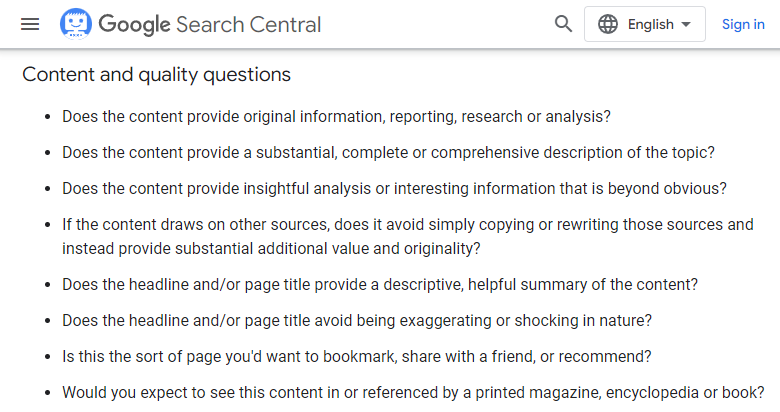
Moreover, you’ll be able to use recommendations on high quality content material from Google’s High quality Raters Tips. Even supposing the record is supposed principally for Seek High quality Raters to evaluate the standard of a web site, site owners can use it to get some insights on the way to make stronger their websites. To be informed extra, take a look at our article at the High quality Rater Tips.
Every other side to concentrate on is optimizing the user-generated content material for your web site.
For instance, let’s suppose you’ve got a discussion board, and somebody asks a query. Even supposing there could be many precious replies one day, there have been none on the time of crawling, so Google might classify the web page as low-quality content material.
What will have to you do to offer protection to your self from this case? Learn my article to determine what Quora’s technique used to be to unravel this downside.
Take into account that Google can’t index all the pages at the Web. Its cupboard space is proscribed, so it must clear out the low-quality content material.
Google’s function is to give you the best possible high quality pages that absolute best solution customers’ intent. If a web page is of decrease high quality, Google will perhaps forget about it to go away the cupboard space to be had for higher-quality content material. And we will be expecting the standard requirements to get handiest stricter one day.
STEP 2: Observe your index protection
A URL can be afflicted by the “Crawled ‐ recently now not listed” standing as it used to be listed up to now, however Google made up our minds to deindex it over the years.
If you happen to surprise why, it most probably is:
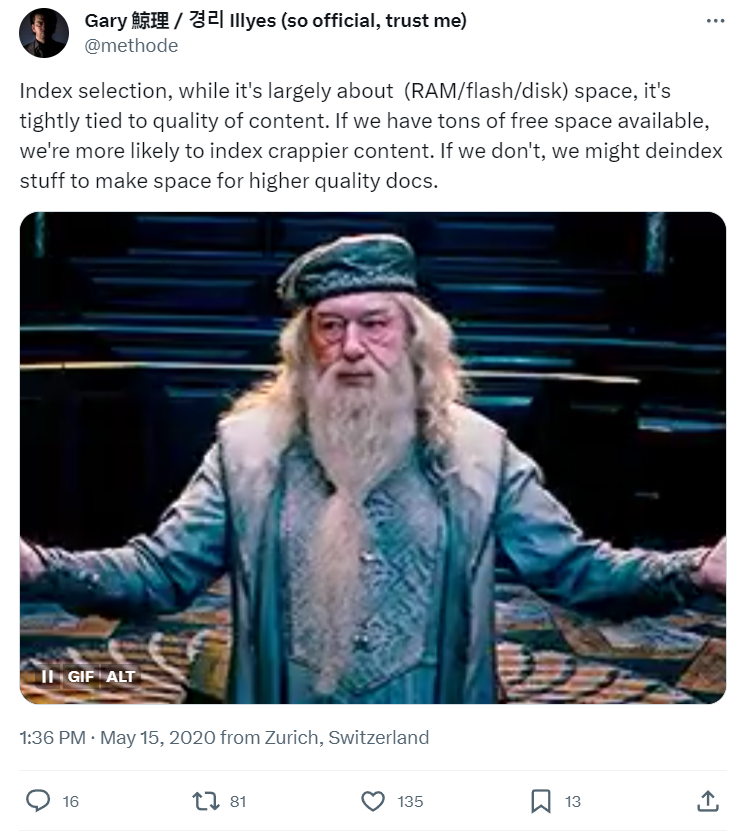
The strategy to deindexed pages is intently associated with their high quality. You will have to all the time be sure that your web page serves the most efficient high quality content material and is up-to-the-minute.
Don’t suppose that when a web page is listed, you don’t wish to do anything else with it once more as a result of Google can alternate how it evaluates your content material over the years.
For instance, it’s imaginable for a web page to be listed with out content material. On the other hand, as bots recrawl the web page, then Google might believe it “Crawled, recently now not listed,” in spite of the alerts that had been in the past observed as an important.
To observe your index protection simply, use ZipTie ‒ the technical search engine optimization and indexing intelligence platform. ZipTie permits you to observe indexing delays and updates you weekly at the quantity of content material that were given deindexed.
Stay tracking your pages and enforce adjustments and enhancements if essential. After solving the problems, you’ll be able to post the analyzed URLs to Google Seek Console to lend a hand Google realize the adjustments sooner.
STEP 3: Design a legitimate web site construction
Excellent web site structure is essential to serving to you maximize the possibilities of getting listed. It lets in seek engine bots to find your content material and higher perceive the relation between pages.
That’s why it’s an important to offer a nice web site structure and be sure that there are inner hyperlinks to the web page you need to be listed.
Let’s consider a state of affairs the place you’ve got a good-quality web page, however the one means Google discovered it’s because you set it on your sitemap.
Google may take a look at the web page and move slowly it, however since there aren’t any inner hyperlinks, it will suppose the web page has much less price than different pages. There’s no semantic or structural knowledge to lend a hand it evaluation the web page. That could be one of the vital the reason why Google made up our minds to concentrate on different pages and go away this one out of the index after crawling it.
To be informed extra about web site construction, take a look at our article on How To Construct A Web site That Ranks And Converts.
STEP 4: Prohibit your replica content material
At the start, you will have to be sure to create unique pages. Google desires to offer distinctive and precious content material to customers. That’s why, when it realizes all over crawling that some pages are equivalent or just about equivalent, it will index handiest considered one of them.
Sadly, replica content material could be unavoidable (e.g., you’ve got a cellular and desktop model). You don’t have a lot regulate over what seems in seek effects, however you’ll be able to give Google some hints concerning the unique model.
If you happen to realize a large number of replica content material listed, evaluation the next components:
- Canonical tags: those HTML tags inform search engines like google and yahoo which variations are the unique ones.
- Interior hyperlinks: be sure that inner hyperlinks are pointing for your unique content material. Google may use it as a trademark of which web page is extra vital.
- XML Sitemaps: be sure that handiest the canonical model is on your sitemap.
However needless to say those are handiest hints, and Google isn’t obligated to practice them.
If Google ignores your canonical tag, you’ll be able to spot it because of the “Replica, Google selected other canonical than consumer” standing in GSC.
For instance, Adam Gent, an search engine optimization freelancer, shared a captivating case with the search engine optimization group. His web page used to be reported as “Crawled ‐ recently now not listed” as a result of Google concept it used to be a replica web page.
It’s now not fully transparent why Google may make a choice “Crawled – Lately Now not Listed” over a devoted standing for replica content material. One of the crucial imaginable explanations is that the standing will alternate later after Google makes a decision if there’s a extra appropriate one for the web page.
An alternative choice could be a reporting worm. Google may merely make a mistake whilst assigning the statuses. Sadly, the placement is tougher as a result of “Crawled – Lately Now not Listed” doesn’t come up with as a lot knowledge as a devoted standing for replica content material.
How one can take a look at if a replica web page is appearing within the seek effects? Head to our article on How To Optimize Replica Content material for search engine optimization.
STEP 5: Manually post a request to Google to re-crawl your explicit URLs.
Prior to manually filing a request to Google, care for your web site content material and do all of it to maximise your authority. Subsequent, pass to URL inspection, input the URL cope with, and hit Request Indexing.
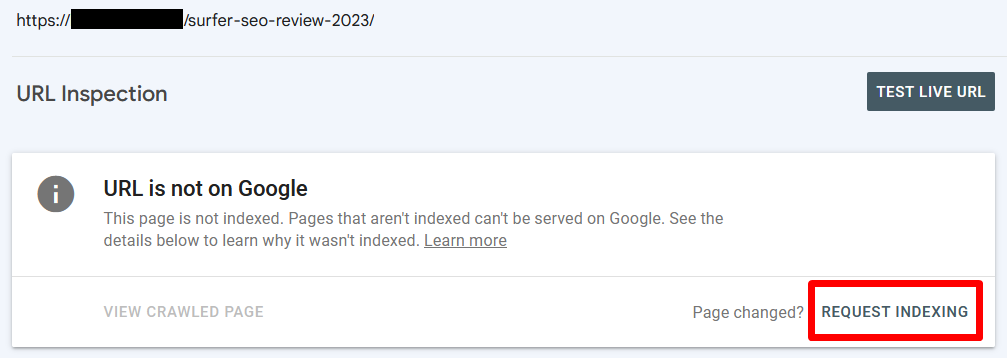
You’ll be able to additionally take a look at a 2d, extra computerized means. Move to Indexing → Pages → “Crawled – Lately Now not Listed”. Make a choice All recognized pages, and hit Validate Repair.
As soon as Google accepts your request, you’ll see when validation has began.
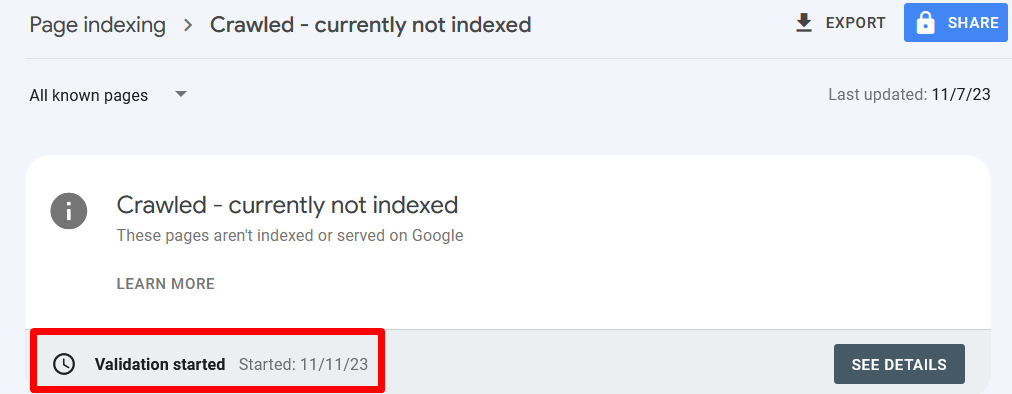
Different causes for “Crawled – Lately Now not Listed”
When finishing 5 major steps from our article, you will have to wait no less than a couple of days for Google to reindex the given pages. After one or two weeks, take a look at your web site in Google Seek Console once more, and revel in your solved downside!
However…
If you happen to nonetheless face “Crawled – Lately Now not Listed,” we’ve got your ultimate lifelines!
Your Area Ranking (DR) is simply too little.
By way of generating a large number of top of the range content material in your web site, you’ll be able to get extra agree with from Google and spice up your area authority. It appears easy. On the other hand, you will have to know that you can not beat the competition and feature a prime indexing stage with out back-links.
Scorching to begin getting herbal and related back-links?
- Test your web site’s Area Ranking in Ahrefs’ DR Checker (it’s your start line),

- Get started with one high quality inbound link weekly (from visitor posting),
- To find out further passive back-links strategies (like developing viral content material, making ready worthy infographics, and sharing your individual trade statistics).
Continuously obtaining back-links will persuade Google that your web site is efficacious, leading to a better indexing standing and higher Area Ranking.
You don’t have a brief sitemap.xml
Once in a while, the vacation spot URLs of redirects seem within the “Crawled – Lately Now not Listed” file. This isn’t because of wrong redirects however fairly pertains to how steadily Google crawls your web site. It’s imaginable to note that Google crawls those vacation spot URLs however doesn’t upload them to its index.
A possible answer comes to developing a brief sitemap.xml report. Start by way of extracting all URLs from the “Crawled – Lately Now not Listed” file and align them with established redirects the use of Excel or Google Sheets.
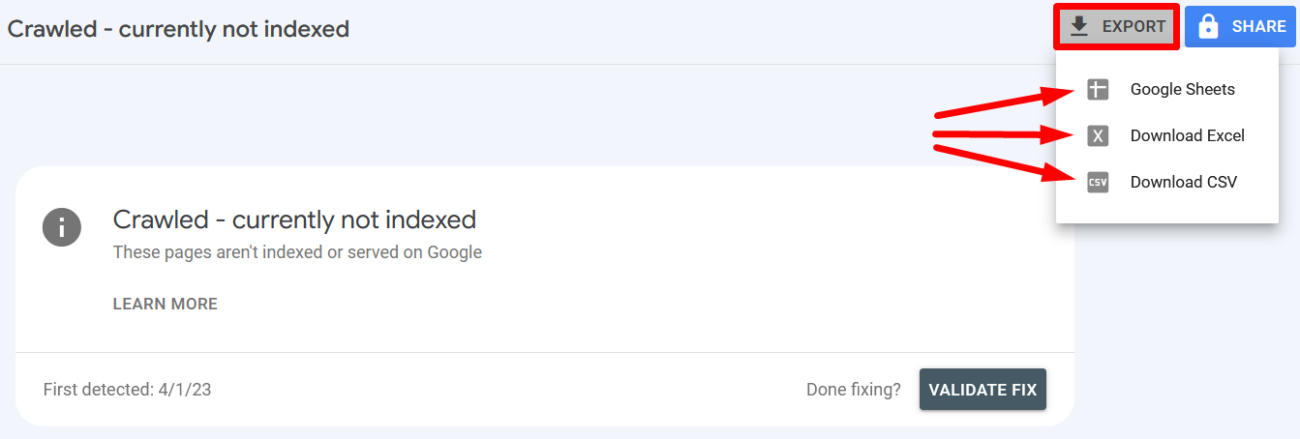
Then, generate a sitemap, which may also be performed with gear like XML Sitemaps, and add it for your Google Seek Console dashboard.
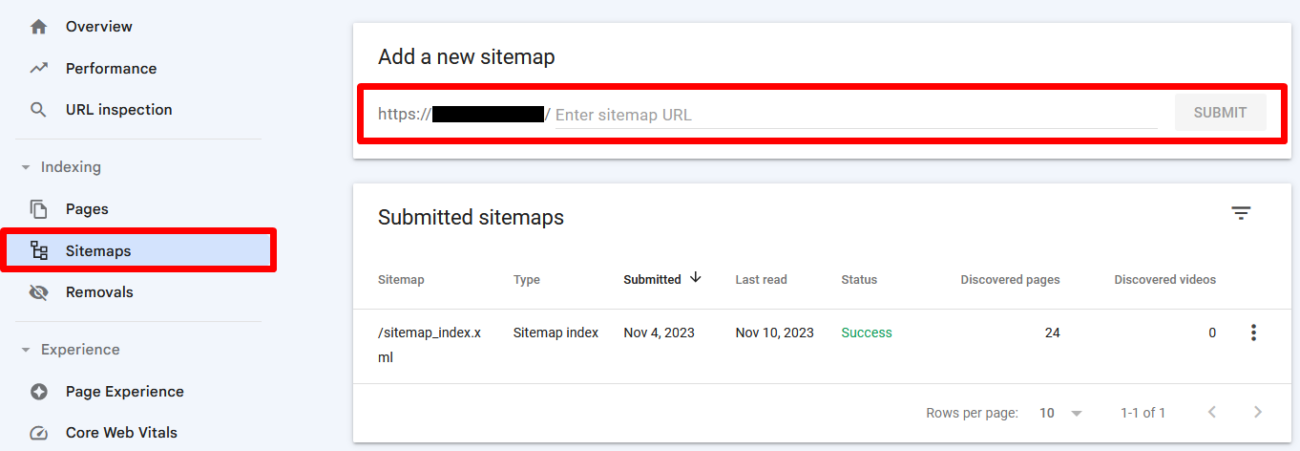
You wish to have a technical search engine optimization lend a hand
Nonetheless having the similar downside? We will permit you to repair “Crawled – Lately Now not Listed”. Right here’s what you’ll be able to do now:
- Touch us,
- Obtain a personalised plan from us to maintain your indexing problems,
- Experience your content material in Google’s index!
Nonetheless undecided of losing us a line? Learn how technical search engine optimization products and services will let you make stronger your web site.
“Crawled – Lately now not listed” vs. “Found out – recently now not listed”
The “Crawled – Lately Now not Listed” standing is regularly perplexed with every other indexing factor within the Index Protection (Web page indexing) file: “Found out – recently now not listed.”
Either one of the statuses point out that the web page isn’t listed. On the other hand, in relation to “Crawled – Lately Now not Listed,” Google has already visited the web page. In the meantime, in “Found out – recently now not listed,” the URL is understood to Google, however it wasn’t crawled but for some explanation why.
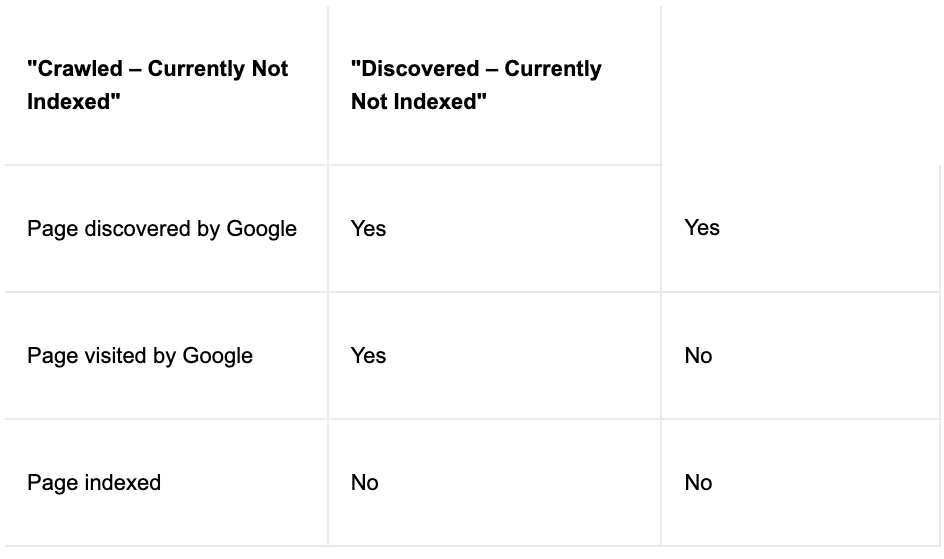
One of the most causes for those statuses could be identical, together with poor-quality pages and inner linking construction issues. On the other hand, whilst you see a “Found out – recently now not listed” standing, you wish to have to moreover examine why Google couldn’t or didn’t need to get entry to the web page. For instance, it will point out issues of the entire high quality of the entire web site, move slowly price range problems, or server overload.
Wrapping up
“Crawled – Lately Now not Listed” is principally related to web page high quality, however actually, it may possibly point out many extra issues, like complicated web site structure or replica content material.
Listed below are the key takeaways that will let you maintain the “Crawled – Lately Now not Listed” standing:
- Upload distinctive and precious content material for your pages. Upon getting performed it, post the ones URLs to the Google Seek Console. This fashion, Google might realize adjustments briefly;
- Assessment your web site structure and make sure there are inner hyperlinks for your precious pages;
- Make a decision which pages will have to and shouldn’t be listed to lend a hand Google prioritize probably the most precious URLs;
- Get top of the range, herbal, contextual back-links (exterior hyperlinks) to skyrocket your Area Ranking (DR);
- Put into effect brief sitemap.xml (comes in handy in fixing the issue of goal URLs from 301 redirects which have been listed by way of Google however aren’t but within the index).
If you wish to have lend a hand addressing the “Crawled – recently now not listed” standing for your web site, our technical search engine optimization products and services are what you’re on the lookout for.
“Crawled – Lately Now not Listed” – FAQs
What are the commonest questions and solutions about “Crawled – Lately Now not Listed”
No fear. It’s standard – Google doesn’t index RSS feeds as a result of their number one objective is distributing content material to RSS readers, to not be displayed at once in seek effects. RSS feeds in most cases comprise condensed or streamlined variations of content material supposed for fast transmission of updates fairly than complete indexing by way of search engines like google and yahoo.
2. Are Google Index URLs with redirects?
John Mueller, a consultant of Google, made a commentary on Twitter clarifying that Google’s indexing procedure doesn’t come with pages arrange with redirects. Pages with redirects are categorised otherwise and shouldn’t be perplexed with pages marked as “Crawled – Lately Now not Listed”.
